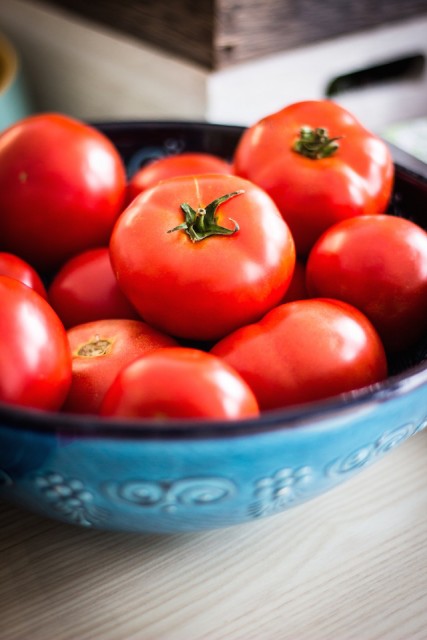Life’s greatest pleasures lie in the simple things—and for those who have tried it, high on that list is eating food we’ve grown ourselves.
For those who never have, it may seem more daunting than it actually is. I’m not saying growing food is altogether easy—but it can be, depending on what we choose to grow.
It is possible to grow some favorite varieties without having a vegetable plot. I have successfully grown in pots in the past, and I’m revisiting that strategy again this year.
Even if you don’t have any outdoor space at all, it’s possible to grow if you have a window that gets some good light (south-facing is ideal). And with a small bit of sheltered and sunny outdoor space, your options are even better.
The following are what I focus on when I’m confined to growing in pots, and all are suitable for newbies to get started with:
Rocket & Lettuce.
Although grown outdoors, salad leaves do fine in containers as they have shallow roots. Sow between March and August and harvest up until October.
Look for a “cut-and-come-again” variety, and each plant will yield up to four cuts of leaves. The seeds will come with specific directions as to how deep to sow (we’re talking fractions of an inch), how far apart and whether or not to thin.
Usually, you’ll be instructed to place them in pre-watered soil. It’ll take a week or two to start seeing shoots, so remember to keep the soil moist while you’re waiting.
Although you can get multiple cuts of leaves per crop, to ensure a steady supply throughout the season, continue to sow a new batch of seeds every two to three weeks. And if you end up with a bit of a glut, remember that rocket not only makes for a peppery salad, but also produces a strong and satisfying pesto.
Spring Onions.
Although the instructions on my seed packet advise to sow outdoors, I have grown spring onions in a poly-tunnel, so I assume a window sill would work too. (This year though, I am growing in a pot outdoors.)
As with salad leaves, regular sowings every couple of weeks is the way to go for a steady supply from March to October. The seedlings can take longer to appear, but should pop up two to three weeks after sowing.
They are super-easy to grow: sow, water and wait. When ready, pluck straight from your pot and add to salad.
Tomatoes.
Apart from herbs, tomatoes were the first food plants I ever grew. I think the same may be true for many newbie growers. But then, who’s afraid of a glut of tomatoes? They’re so easy to include in any summer-time meal.
If you have a sheltered, sunny outdoor spot—that will work well for tomatoes. But they do thrive in greenhouses, polytunnels or warm kitchen windows.
Although in my first year of growing I did sow from seed, I now keep things simple and buy a couple of young plants from my local organic farmer.
Whether you sow your own, or buy a young plant, you will need to transplant to a larger pot or grow bag to enable the plant to grow to its full potential. And be sure to use a cane or stake to support the plant as it grows.
Regular watering is important (probably daily), as is fortnightly feeding once the fruit start to appear. Remove yellowing leaves and keep an eye on the flowers—after drying, they should fall away, leaving the tomato in its place. Sometimes though, they need a little help being plucked away.
As the tomatoes ripen, pluck and eat them as soon as possible to enjoy their best flavour (which is lost if they’re stored in the fridge).
Cucumbers & Zucchini.
Like tomatoes, rather than growing from seed, I buy young plants and transplant to a bigger pot. They can be grown outdoors, but they do like humid conditions, so a well-watered plant in a warm, sunny window should do well.
Similarly to watering tomatoes, be careful to moisten the soil while avoiding the leaves. Once the fruits start to come, be meticulous about keeping the plant moist—if it dries out, the fruit may be bitter.
Use a cane or trellis to support the growing plant, and pinch out the growing tip when it reaches the height of the cane or other support.
Cucumber and zucchini plants both yield approximately 15 fruits and produce flowers that are also edible. They have male and female flowers—the females have the fruit behind them while the males just have a stem. It’s best to remove the male flowers as, similar to a dried-out plant, they can also cause the fruits to be bitter.
Once your fruits do start to appear, keep a close eye on them—they have a tendency to grow so quickly, it seems like they double in size overnight. And they’re tastier if harvested when smaller.
Of course, there is a small drawback with cucumbers and zucchinis: you can wind up with something of a glut. But that’s easily remedied if you have a friend who’s into pickling and chutney-making.
If not, then you may need to take up another foodie hobby.
.
Relephant:
DIY Crunchy Delicious Dill Pickles. {Recipe}
.
Author: Hilda Carroll
Editor: Yoli Ramazzina
Photo: Unsplash








Read 0 comments and reply